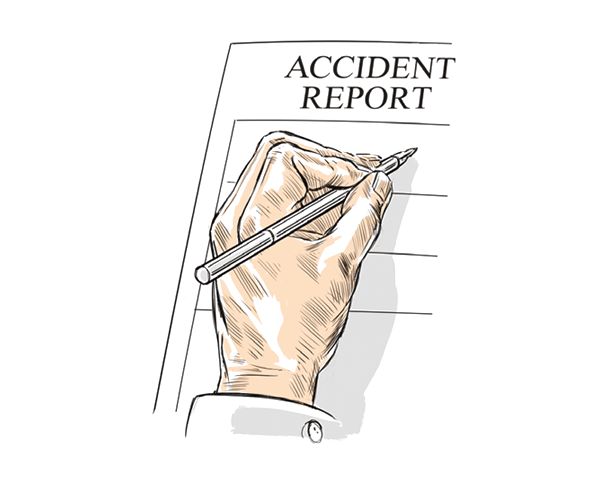Closed and locked?
Mooney M20K
G-OSUS
Membury Airfield, Berkshire
Injuries: None
The aircraft was in level flight and had been flying for approximately 15 minutes when the baggage door opened and detached. It struck the right tailplane and remained wrapped round its leading edge near its tip. This caused the pilot control difficulties and increased drag. The pilot declared a Mayday and made a successful emergency landing at Membury Airfield.
The investigation found the safety clip for the internal emergency operating handle of the baggage door was not correctly installed, so instead of holding the handle closed it held it in a slightly open position.
During the flight, it seems most likely that this handle moved sufficiently towards the open position to disengage the shoot bolts from the door frame allowing the door to open.
It could not be determined when the safety clip was incorrectly installed or why it had not been noticed.
Comment The internal safety locking mechanism had been incorrectly assembled and slightly damaged to the point where spotting the fault was difficult.
However, the consequences could have been dire and on another aircraft type may have resulted in loss of the tailplane and ultimately loss of control. Worth getting up close and checking those latches!
Unsolved mystery
Cessna 172S
G-CBXJ
Nr Puffin Island, Anglesey
Injuries: One fatal
The pilot had arrived at Caernarfon Airport at about 0915 on the day of the accident, having booked that morning to fly G-CBXJ with the flying club based at the airport.
He planned to complete a local flight from Caernarfon out to Great Orme, a small peninsula about 24 miles along the coastline to the east, returning via Puffin Island off the north-east coast of Anglesey, which was a flight of about 30 minutes. The pilot checked the weather and booked out with the flying club before going out to the aeroplane at about 0925.
The engine, however, would not start. An engineer examined the aircraft and identified the starter motor shear pin had failed. While the engineer worked on the aircraft, the pilot returned to the flying club where he talked to a number of people who described his demeanour as being ‘normal’.
With the aircraft operating, the pilot took off. Several minutes into the flight the aircraft descended into the sea, killing the pilot.
There was no evidence of a structural failure leading to the accident and a trial to replicate the final flight profile discounted a full or partial engine failure.
The trial concluded that it was likely the aircraft required an input on the controls in order to enter and maintain the recorded final descent path. The post-mortem and toxicology tests did not reveal any indication that the pilot had become incapacitated, although it is still possible that this had occurred. The pilot had been unwell in the days before the flight and his complaint of feeling ‘uncomfortable’ when the car he had been travelling in had accelerated, was unusual. His family had however considered he was well again at the time he went flying and saw nothing unusual in his behaviour.
Comment No definitive cause for the accident could be found and although there are theories as to what happened, all seem improbable and none will likely ever be proven.
Student surprise
Cessna 152
VH-JIW
Archerfield Airport, Queensland
Injuries: One minor
During the flight, the instructor demonstrated a number of manoeuvres from the ‘effects of control’ flight training syllabus.
With the aircraft in a nose-up trim, the student then practised re-trimming the aircraft for level flight, while maintaining attitude using nose-down pressure on the control wheel.
At about 2,000ft above ground level, with the student flying, the instructor moved the pitch trim to about two-thirds travel nose down. The student maintained attitude with nose-up pressure on the control wheel. The instructor’s feet were lightly on the rudder pedals, left hand on their leg, and right hand resting on the glareshield (next to the control wheel).
The student maintained straight and level flight for a short period. When it came time to return the elevator trim to neutral, the student became confused about the correct procedure and let go of the control wheel. The aircraft rapidly pitched nose down, rolled left, and entered into a dive. During these events, the flight instructor’s headset dislodged from their head.
The flight instructor took control of the aircraft and subsequently arrested the descent at about 400ft, about 25 seconds after the descent commenced.
During the occurrence sequence, the instructor pulled the throttle back quite rapidly. At some stage the throttle was bent causing it to become stiff, although it still functioned normally. The instructor then terminated the lesson and the aircraft landed without further incident.
The instructor sustained several minor injuries, including an injury to the left shin after it contacted the underside of the instrument panel, a head injury from impact with the cabin roof, and bruising to the right hip. The student pilot was uninjured. The aircraft sustained damage to the right horizontal stabiliser.
Comment This will not be the first student to have become confused and nor will this be the first instructor to be caught out by their student’s actions, but rarely are the consequences so dramatic! A salutary reminder of the power of a trimmer and why it needs treating with respect.
Too hot to handle
Van’s RV-6
N306FR
Coldwater, Kansas
Injuries: Two serious
The pilot flew a long straight-in final at between 90-93kt and partial flap because of perceived gusty wind. As he attempted a wheel landing in the tailwheel-equipped aeroplane, there was some turbulent air, then a gust of wind hit the aeroplane and it ballooned about 8-12ft above the runway. The pilot said he initiated a go-around and added full power when the engine hesitated and ‘stuttered’. The aeroplane settled and the right wing struck the ground. The aircraft spun round. Flames began to enter the cockpit and the pilot and passenger egressed the aeroplane.
They were wearing shorts and flip-flops and received burns during the egress. The pilot was unable to turn off the master switch, so the electric fuel pump continued to move fuel increasing the post-impact fire. The fire consumed most of the cockpit and fuselage. The nearest aviation weather station was 37nm away. About the time of the accident, the wind was recorded as 120° at eight knots, but later increased at the station to nine knots gusting 16kt.
Comment While many might question the landing technique and the likelihood it contributed to the ground loop the pilot and passenger’s apparel clearly was not ‘cool’. I suspect few of us will always be tempted by shorts and flip-flops, but this is a reminder to dress for the risk of fire and ensure your under layers at least are ‘inherently flame retardant’ (See Safety Kit).
Best of intentions
Monnet Sonerai
N197X
Dewitt, Michigan
Injuries: One fatal
The commercial pilot was attempting to land on an airstrip on his property, but on short final, the aeroplane struck power lines and then descended and impacted terrain.
Before the accident flight, the pilot told a friend that he needed to return home before a certain time or there would be a problem with sun glare during landing.
The pilot was approaching his airstrip on a westerly heading. The position of the sun was 14° above the horizon and about 20° left of the pilot’s vision. The position of the sun likely hampered the pilot’s ability to see the power lines, which resulted in his failure to avoid them.
Comment We sometimes underestimate the significance of low sun angle, particularly at this time of year. When runway length is plentiful there’s usually a bit of extra wriggle room, but short strips, often with obstacles, can be a real problem.
This was recognised by this very experienced pilot and still it claimed his life. Change runway direction, hold off or divert if it’s that bad. There is nothing to be ashamed of!







